Does someone know a (preferably open-source) PDF layout engine for Java, capable of rendering tables with horizontal page breaks? "Horizontal page breaking" is at least how the feature is named in BIRT, but to clarify: If a table has too many columns to fit across the available page width, I want the table to be split horizontally across multiple pages, e.g. for a 10-column table, the columns 1-4 to be output on the first page and columns 5-10 on the second page. This should of course also be repeated on the following pages, if the table has too many rows to fit vertically on one page.
So far, it has been quite difficult to search for products. I reckon that such a feature may be named differently in other products, making it difficult to use aunt Google to find a suitable solution.
So far, I've tried:
BIRT claims to support this, but the actual implementation is so buggy, that it cannot be used. I though it is self-evident for such a functionality, that the row height is kept consistent across all pages, making it possible to align the rows when placing the pages next to each other. BIRT however calculates the required row height separately for each page.
Jasper has no support.
I also considered Apache FOP, but I don't find any suitable syntax for this in the XSL-FO specification.
iText is generally a little bit too "low level" for this task anyway (making it difficult to layout other parts of the intended PDF documents), but does not seem to offer support.
Since there seem to be some dozens other reporting or layout engines, which may or may not fit and I find it a little bit difficult to guess exactly what to look for, I was hoping that someone perhaps already had similar requirements and can provide at least a suggestion in the right direction. It is relatively important that the product can be easily integrated in a Java server application, a native Java library would be ideal.

Now, to keep the rows aligned across all pages, the row heights must be calculated as follows:
Row1.height = max(A1.height, B1.height, C1.height, D1.height)
Row2.height = max(A2.height, B2.height, C2.height, D2.height)
While BIRT currently seem to do something like:
Page1.Row1.height = max(A1.height, B1.height)
Page2.Row1.height = max(C1.height, D1.height)
Page1.Row2.height = max(A2.height, B2.height)
Page2.Row2.height = max(C2.height, D2.height)

